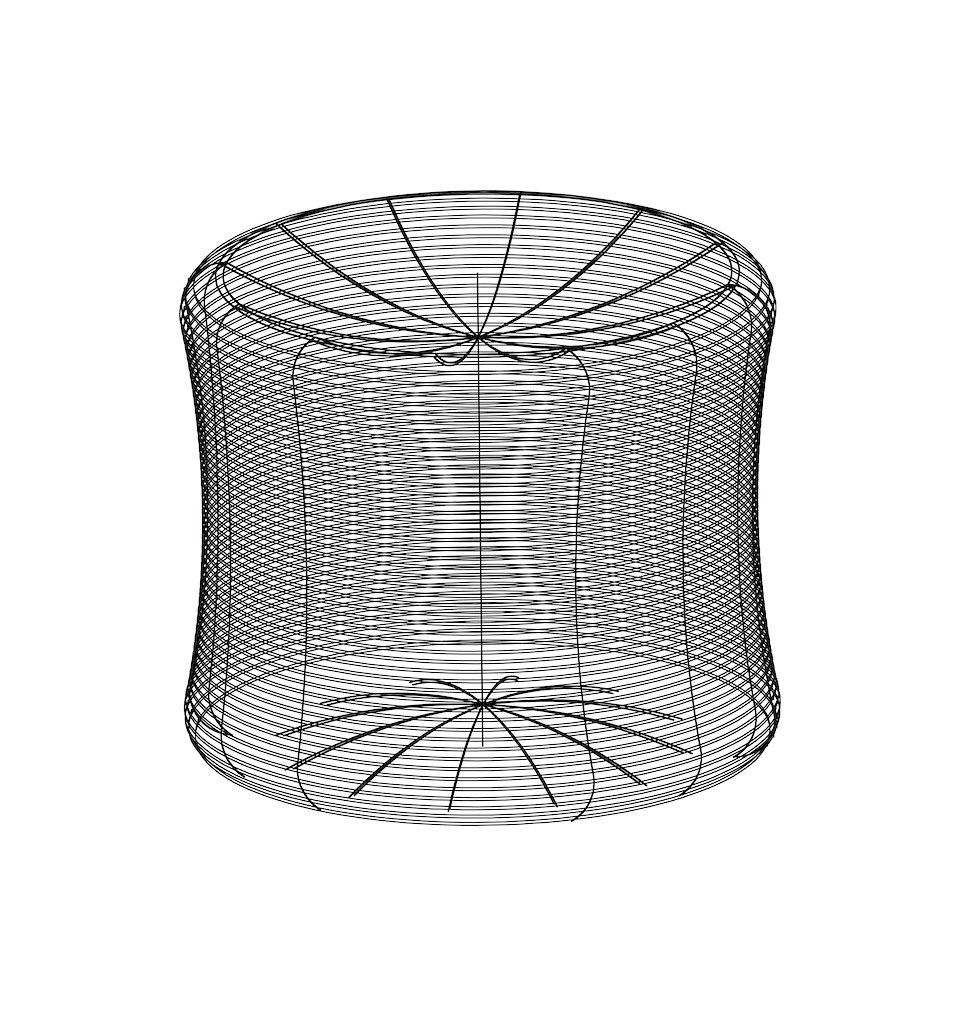FurnitureTotoro
At the time I was reading a lot about the artist Sol LeWitt and his wall paintings.
In particular: “Wall Drawings #337 and #338: Two part drawing. The wall is divided vertically into two parts. Each part is divided horizontally and vertically into four equal parts”.
There seemed nothing more subtle in how to create something and almost nothing on the wall – to change the feeling of the space. The idea of a wire thickness to effectively become a drawing in space was pursued. The wire being divided horizontally and vertically.

Co-designed & developed at SPD for Heals, UK

Early line study examples for Mushroom stool and Totoro stool. Any excuse to get the watercolors out!

Totoro used as a side table in-situ with companion chair


The wire technique was not only cost effective to meet the target price, but it actually became a product that could be used both inside and outside. The vertical wire structure is divided into 16 parts and revolved around its centre. The finer wire is then wrapped around the 16 vertical elements, delicately tied together and powder coated.
Whilst looking visually delicate and ethereal within an interior space, the product can actually withstand a large amount of weight, that defies its materiality.
It can be used as a stool or a side table element. Produced using the unique hand craft skill base in Northern India.
Press
